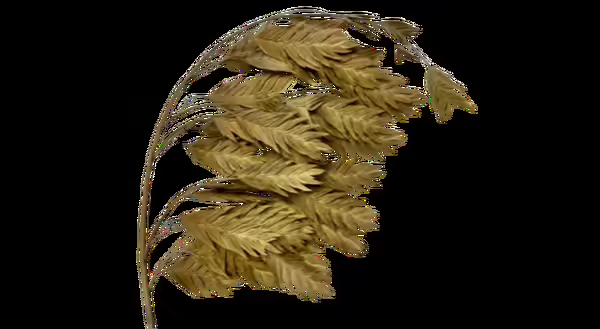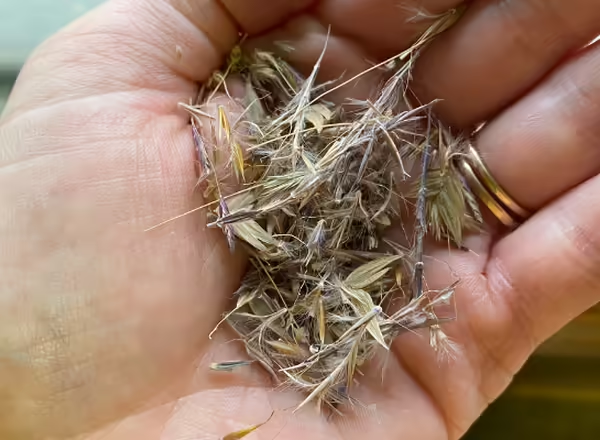
Over the past two months, I’ve been working with Master Gardener and Master Naturalist volunteers to sort, clean, and package seeds of native plants we collected from pollinator gardens in the fall. We plan to give away these seeds at local programs that focus on supporting pollinators. It’s always a fun time getting together and chatting about the different types of plants we collected from and how their seeds differ so much from one another. We mostly collect seeds from wildflowers but also collect seeds of native grasses.
Grass seeds develop in the spikelet of a grass, which is the flowering unit. Spikelets have many parts and pieces, and for identification purposes I usually avoid going in depth on spikelet details to eliminate the need for a microscope.
But even without a microscope you can see visual differences in the spikelets of grasses – some are larger than others, some have soft hairs while others are smooth, some have awns or bristles, and some are even brightly colored.
With the weather warming up, you might be ready to get started with planting. When it comes to grasses, should you start from seed or a potted plant? There are pros and cons to each approach.

Starting from seed
Seeds are less expensive than potted plants, so if you are planting over a large area, they can be a great economical option.
Many seeds of native plants need to undergo a pretreatment process called cold stratification to aid in seed germination. Cold stratification is a process in which the seeds are exposed to cool, moist conditions for a period of time in order to break seed dormancy. If you think about fall and winter weather conditions in Illinois, this happens naturally outdoors. You can spread your seeds in the fall or winter to allow this process to happen naturally, or you can mimic it in the refrigerator. If plants need this pretreatment it is often indicated on the seed packet, along with the number of days the treatment is required (usually between 30 and 60 days).
Some examples of grasses that require cold, moist stratification are Porcupine Grass, Purpletop, and American Beakgrass. Big Bluestem, Side Oats Grama, Bottlebrush Grass, and Switchgrass are examples of grasses that do not need a pretreatment to germinate.
Starting from seed also requires patience! Some grasses grow faster than others, and it can take several years for grasses to readily establish and grow to their expected sizes.

Starting from potted plants
If you are looking to add a few specimen grasses to your landscape, a potted plant might be a better option. Potted plants are often a year or two old. Grasses can be planted during the fall or spring, just avoid transplanting during the heat of the summer.
Potted plants can be purchased in different sizes, so you can start with a large, full plant if you are looking for an instant change to your landscape. Of course, the larger the plant, the more expensive they tend to be.
Will you add some grasses to your home landscape this spring?
Learn more!
If you want more information about cold stratification, check out the Native Seed Starting for Spring Planting webinar.
Thank you for reading!
Never miss a new post! Subscribe to our email list to get updates each time a new post is available.
Give us feedback! How helpful was this information (click one): Very helpful | Somewhat helpful | Not very helpful
ABOUT THE AUTHOR: Erin Garrett is a Natural Resources, Environment, and Energy Educator for University of Illinois Extension serving Alexander, Johnson, Massac, Pulaski, and Union counties. Erin develops and delivers high impact programming to adults and youth to help them develop an appreciation for natural resources and to empower them to make small changes to positively impact the environment. Erin’s programming focuses on why homeowners should consider choosing native plants, how to support native pollinators, how to identify grasses, how to identify and manage invasive species, and developing an appreciation for prairie ecosystems.